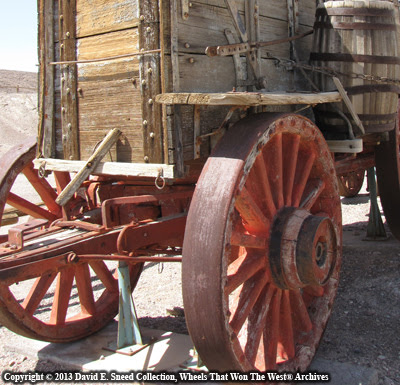For instance, the Borax wagons have tire widths of 8inches. That’s huge and far fromtypical. The reasons for the size gobeyond the weight being hauled and also take into account the softer desertterrain. Several years ago, I wrote anarticle about the wheel sizes of early chuck wagons and the factors that helpdetermine the tire widths on these and other wagons. Click here for more details. 

I’ve often said that these wagons talk. Looking closely at the individualconstruction features of specific wagons can tell you a lot about thevehicle. It’s another reason that no twovehicles are exactly the same and learning to notice those variations can makeall the difference in “hearing” what a set of wheels is saying. From the design of the box to the size of thetires and everything in between, nothing is insignificant when it comes tounderstanding the way life rolled in the early days of the American West.

